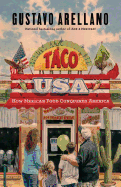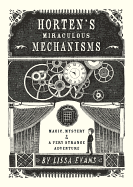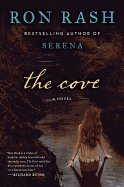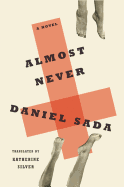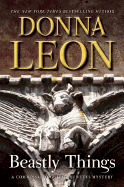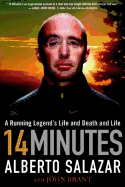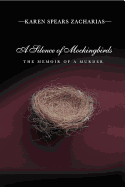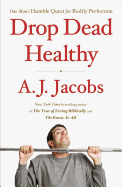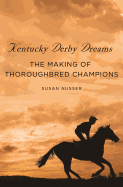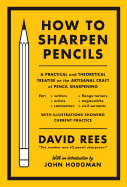Books Do Furnish a Room is the 10th novel by Anthony Powell in his 12-volume brilliant A Dance to the Music of Time. The title is also a favorite saying of mine whenever I contemplate weeding out my books; as spring calls up the tidiness gene, weed I must. This year I have inspiration for the process with a delightful book from Yale University Press that showcases authors' shelves.
Three years ago, Yale published Unpacking My Library: Architects and Their Books by Jo Steffans. Last November, Yale brought out Unpacking My Library: Writers and Their Books by Leah Price. She says in the introduction, "A self without a shelf remains cryptic; a home without books naked." In addition to the tactile and visual pleasure our books give us, we are curious about others' bookshelves, even as we wonder what others will think of our own displays. Leah Price has offered a glimpse into authors' book lives with this collection of photographs, interviews and Top 10 Books.

From the neat yet comfortable look of Jonathan Lethem's library to the pristine order of Rebecca Goldstein's shelves to the stacks and piles of Edmund White's bookcases, we can see what the pros do, décor-wise and otherwise. Alison Bechdel is an excessive marker-up of books--sticky notes, highlighters, extensive marginalia; a close-up of her desk reveals a passion for Edward Gorey, along with The American Puritans by Perry Miller and John Ciardi's children's books. Stephen Carter, who surrounds himself with books, tells a story about his 10th grade English teacher challenging him to read great literature. As with many authors, Philip Pullman's collection stretches back to his childhood--he started buying books as soon as he had enough money. Gary Shteyngart has some advice on throwing out books: "some crappy books remind you of certain times in your life and have to be kept. In the closet.
Here you can find inspiration when the mood strikes to rearrange, to cull, to give away--and also reasons to keep your overflowing shelves just as they are. --Marilyn Dahl
The Cove
by Ron Rash
Four years after the publication of Serena, Ron Rash returns to the mountains of western North Carolina to tell a love story set in the waning days of the First World War.
Life is simple and harsh in the cove where Laurel Shelton lives with her brother, Hank, who's returned home after sacrificing a hand on the European battlefield. Their parents both have died in the preceding year and Laura, disfigured by a prominent birthmark, must endure the whispers of locals that she is a witch.
Her life changes the day she encounters Walter Smith, a mute, illiterate man who plays flute music so sorrowful it was as if "was about every loss that had ever been." When he proves his usefulness as a laborer, the Sheltons invite him to stay on at their cabin; the initial attraction Laura feels for him quickly deepens into love. The discovery midway through the novel of a secret Walter has been hiding casts a dangerous new light on the lovers' involvement and propels the story toward its devastating climax.
The novel is based in part on a true incident involving German sailors interned in a prison camp in Hot Springs, N.C. In the character of Chauncey Feith, an officious striver who serves as the local army recruiter and scourge of all things German, Rash exposes the ugliness of the nativist sentiment that seems a recurring plague of our life in wartime.
That strong sense of place might cause some to pigeonhole Ron Rash as a "regional" writer, but with The Cove, he leaves the strong impression he's only begun to mine a rich lode of memory and imagination his region has delivered to him. --Harvey Freedenberg
Discover: Ron Rash returns to the mountains of North Carolina with a powerful new love story.
Almost Never
by Daniel Sada, transl. by Katherine Silver
First published to great acclaim in Spanish in 2008, Almost Never is a story of futile longing, of maddening distances, of insufferable boredom, of gratification delayed just a little too long. In other words, Almost Never is a story that almost never gets to the point--of course, that is the point. Daniel Sada, who died in November 2011 (hours after receiving Mexico's National Prize for Arts and Sciences in Literature), was known for writing in an unusual, distinctive metric that played with rhythm and syntax. Here, the effect subtly delays every thought and movement of its characters--mirroring the protracted plot.
It is Oaxaca, 1946, and Demetrio Sordo is a semi-successful agronomist torn between consuming infatuations with two women in opposite ends of Mexico and on opposite ends of the virgin/whore dichotomy. But this is no love story. Money and sex are Demetrio's primary motivations--mostly sex: "Sex, as an apt pretext for breaking the monotony; motor sex; anxiety-sex; the habit of sex, as any glut that can well become a burden; colossal, headlong, frenzied, ambiguous sex, as a game that baffles then enlightens then baffles again; pretense sex, see-through-sex."
And that's just the book's opening passage; the story ends with sex, too--its final words are "Sheer relief." Relief, indeed. Deliberately tedious yet weirdly captivating, Sada's writing is a marvel. It's this--not Demetrio or his many dilemmas--that makes Almost Never a remarkable (and funny, and exasperating) novel.--Hannah Calkins
Discover: A strangely irresistible story of lust and tedium, Sada's final novel rewards readers' patience.
Truth Like the Sun
by Jim Lynch
Jim Lynch's Truth Like the Sun opens with the 1962 Seattle World's Fair, then leaps ahead to 2001, sweeping the entire boom-bust-dreamer mentality of the city into a novel whose characters could step out of the Space Needle elevator today.
Roger Morgan, just 30 when he masterminded the World's Fair, is still a pillar of Seattle politics and society, a silver-haired, back-slapping 70-year-old currently running for mayor. As his campaign launches, Helen Gulanos, a young journalist at a moribund city newspaper, grudgingly researches a 40th-anniversary article on the Fair, but her instinctive reporting turns up secrets Morgan and his loyalists have buried for years, leading to a growing mutual respect between the candidate and the reporter. In an effective then-and-now-chapter format, Lynch (Border Songs) uses memories, reporting and vivid descriptions of the Pacific Northwest to chronicle how the barely post-pioneer-era city of '62 became the symbol of the high-tech early 21st century.
Scenes from the Exposition include walk-ons by Elvis Presley (the title is attributed to an Elvis quote), LBJ and other luminaries of the era, along with the fictional developers, cops, and gamblers who figure in the graft Gulanos uncovers. Helen and Roger are sympathetic characters, and Lynch, a native of the Northwest with a sharp journalistic background of his own, presents Seattle with obvious experience and affection. --Cheryl Krocker McKeon, bookseller
Discover: An evocative novel of Seattle during the 1962 World's Fair and the 2001 dot-com era with colorful characters who span the years.
Mystery & Thriller
Beastly Things: A Commissario Guido Brunetti Mystery
by Donna Leon
It is a pleasure to settle in to one of Donna Leon's Commissario Guido Brunetti mysteries, once again to have glorious Italian lunches with his wife, Paola, and their children, Raffi and Chiara, and to learn, as we do in Beastly Things, which part of the seamy underside of Venetian life Brunetti will now uncover.
This time, a body is found in one of the canals. It is eventually identified as a local veterinarian, Dottore Nava, well-loved by his patients and their owners. He is recently separated from his wife, and she tells Brunetti that she asked him to leave after he told her he was having an affair.
To increase his income, Nava had taken a part-time job at a local slaughterhouse, where he met Giulia Borelli, his eventual downfall. His duties were limited to certifying that animals were well enough to be slaughtered and their meat fit for human consumption. Lots of room for corruption here, and eventually Brunetti uncovers all of it.
There are two set pieces in the novel that are absolutely brilliant writing: the visit of Brunetti and Vianello to the slaughterhouse and Dottore Nava's funeral. In the former, with no florid adjectives or sensational setups, Leon manages to portray the horror of what the men are led into and the effect it has on them. In the latter, Brunetti notices strange noises in the church and looks around to discover that many of Dottore Nava's patients are in attendance: a green parrot, a Great Dane, a one-eared rabbit, a mournful dachshund and a cat or two. --Valerie Ryan
Discover: Once again, Donna Leon's star sleuth navigates the underside of Venice to find a killer.
Food & Wine
Taco USA: How Mexican Food Conquered America
by Gustavo Arellano
Gustavo Arellano is the author of the nationally syndicated column ¡Ask a Mexican! (and a 2008 book by the same title). Fans will recognize his voice in Taco USA: wise and knowledgeable, but always conversational and informal, even rambling--and very, very funny. Arellano capably handles the history of Mexican people and their cuisine, but Taco USA is less about Mexican food in Mexico than about its interpretations in the United States.
Several waves of Mexican food that have swept the U.S. (beginning with tamales and chile con carne or "chili"), and Arellano treats these as historical trends, tying them to larger themes in U.S. food history. We are reminded that Mexico is the source for global food staples such as corn, tomatoes and chocolate as well as the chile itself. Arellano refutes an emphasis on "authentic" Mexican cuisine in favor of the various permutations (Cal-Mex, Tex-Mex, southwestern, even Midwestern Mexican) that we know and love today. These are not bastardizations, he argues, but legitimate culinary heritages unto themselves, related to the Mexican tradition but not beholden to any of its rules. He is obviously passionate about his subject, which takes him from Taco Bell to Mission-style burritos to Rick Bayless.
Even the experienced border-dweller or Mexican food aficionado is likely to learn a lot, and giggle while doing so. What more can one ask of nonfiction? Just beware a growing desire to run out and get a burrito. --Julia Jenkins, librarian and blogger at Pages of Julia
Discover: A deliciously close-up look at Mexican food in the United States.
Biography & Memoir
14 Minutes: A Running Legend's Life and Death and Life
by Alberto Salazar and John Brant
Salazar (with co-author John Brant, who also wrote about Salazar in Duel in the Sun) begins with the 2007 incident--where the great marathoner was declared clinically dead for 14 minutes--then circles back to his childhood, tracing his development into a world-class athlete. The book excels at defining the influence of Salazar's father, a onetime confidant of Castro who eventually became alienated from the dictator due to his devout Catholicism. Rebellion and faith would become huge components in the son's life throughout his running career and later shape his coaching philosophies. Salazar would prove to be as effective in this role, though always perceiving himself as the maverick and outsider. Salazar and Brant break up each period of Salazar's life with a different angle on the "14 minutes" and how his miraculous survival would alter the trajectory of his life.
14 Minutes succeeds as a biography of a top athlete, but it reaches a place of deeper and lasting resonance with its examination of how a near-death experience can renew spirituality and alter priorities in a positive manner. The fact that this exciting yet even-handed story never turns preachy or clichéd is its own quiet miracle. --Donald Powell, freelance writer
Discover: A rebellious long-distance runner and coach whose life is changed by a near-death experience.
A Silence of Mockingbirds: The Memoir of a Murder
by Karen Spears Zacharias
In the era of Nancy Grace, calling for vengeance for the murder of children has become a kind of pornography. But the literary merits of A Silence of Mockingbirds, a memoir by former crime reporter Karen Spears Zacharias, outweigh any prurient interest, and the art with which she carefully reconstructs events leading up to a senseless, painful tragedy is reminiscent of In Cold Blood in its power.
In 2005, three-year-old Karly Sheehan was beaten to death in Corvallis, Ore., by her mother's boyfriend, who was subsequently jailed after a high-profile trial. Both Karly's father and her daycare provider had noticed suspicious physical signs and behavior leading up to the little girl's death, but a sloppy inquiry by the state left Karly in harm's way. Zacharias, a foster mother of sorts to Karly's mother, is admittedly biased here, but her reaction to the overwhelming atrocity is the awakening of a pure reportorial instinct to ferret out every detail in order to bring out the truth. In doing so, Zacharias employs a sure sense of pace and description that enables this heartbreaking, never-salacious memoir to read like a thriller.
Zacharias intends A Silence of Mockingbirds as a call to action, a "never again" plea. Indeed, Karly's case has inspired legislation designed to strengthen abuse investigations. But Zacharias has, perhaps unwittingly, created something else. For if the point of art is to touch, to affect, to say something profound about the human condition, than A Silence of Mockingbirds is more than a rallying cry; it is a work of art.--Cherie Ann Parker, freelance journalist and book critic
Discover: A reported memoir that reinforces the power of storytelling in the wake of human tragedy.
Health & Medicine
Drop Dead Healthy: One Man's Humble Quest for Bodily Perfection
by A.J. Jacobs
Most readers may recognize A.J. Jacobs as the man who has shared his quest for self-improvement over the course of several books. First, he reported on an attempt to read the entire Encyclopedia Britannica in The Know-It-All. Next, he chose to follow all of the Bible's rules, literally, which led to The Year of Living Biblically, followed by a series of diverse experiments chronicled in The Guinea Pig Diaries. Having conquered the mind and the spirit, Jacobs has turned his attention to the body in Drop Dead Healthy, a memoir of his efforts to become the healthiest man in the world.
Jacobs is refreshingly honest in assessing the status of his physical health (not everyone would readily admit in print that he has a "python-that-swallowed-a-goat type of body"). He is also nearly fearless in his attempts to improve it. He consults a team of medical advisors, reads extensively about health and wellness studies, experiments with an array of dietary manipulations and exercise regimens and analyzes all of his bodily systems. As he loses weight, gains muscle, maximizes his nutrition and improves his sex life, Jacobs shares his insights, successes, failures and ultimate outcomes. Drop Dead Healthy, like Jacobs's previous books, is often laugh-out-loud funny. For many enthusiastic readers, though, it might also be surprisingly informative and, hopefully, motivating. --Roni K. Devlin, owner of Literary Life Bookstore & More
Discover: A honest (and often hilarious) account of the quest to become the healthiest man in the world.
Sports
Kentucky Derby Dreams: The Making of Thoroughbred Champions
by Susan Nusser
Even horse lovers who are ambivalent about racing will love reading about how foals spend the first two years of their lives in Susan Nusser's Kentucky Derby Dreams. Her story starts at 7 a.m. on February 12, 2009, at the height of foaling season--illustrating those first few moments before and after a mare gives birth--and ends a year and a half later, at a sale where the youngsters, true Thoroughbreds all, will meet their new owners and become elite athletes.
Joe Taylor started Taylor Made ranch; now, 30 years later, four of his sons have turned a respected family business into a leading influence in horse management and sales practices. However, the real pleasure of reading Kentucky Derby Dreams is in getting to know the horses and experiencing what's involved in keeping them healthy and happy. Nusser addresses the more controversial aspects of Thoroughbred racing, too--many believe the recent tragic injuries are a result of the industry's shift from racing to the more lucrative breeding. Young horses are therefore raced less frequently, to avoid incurring losses that could impact their value, and as a result are trained less rigorously, left unprepared for the strain racing places on their bodies.
But the Taylors are not involved in the training and racing aspects of the industry. Their focus is on breeding sound, healthy horses that could one day become the next Derby champion. Reading about the Taylors' dedication to Thoroughbred horses is nearly as exciting as watching one cross the finish line. --Kristen Galles from Book Club Classics
Discover: A fascinating and enjoyable peek into the first two years of the lives of Kentucky Derby hopefuls.
Humor
How to Sharpen Pencils
by David Rees
Every day, David Rees sharpens the pencils. Rees, best known for his acerbic "Get Your War On" comic strip, which savagely lambasted Bush-era politics with simple clip art illustrations, moves into the technical manual section of your bookstore with this detailed how-to guide. Alternately, How to Sharpen Pencils: A Practical & Theoretical Treatise on the Artisanal Craft of Pencil Sharpening for Writers, Artists, Contractors, Flange Turners, Anglesmiths, & Civil Servants could be shelved in humor, and there's the beauty of it--this is simultaneously a startlingly knowledgeable textbook and a bull's-eye mockery of startlingly knowledgeable textbooks.
If anyone had wondered what Rees had been doing since ending his comic in 2009, it's now clear: he's been learning inside and out the finer points of pencil types, different sharpening tools and methods and likely much more than even the most enthusiastic pencil aficionado would be expected to know. Every page of How to Sharpen Pencils reads like an instruction manual for treading the narrow line between a self-serious, erudite textbook and an outright mockery of everything that anybody anywhere might take seriously. "Warm-up exercises" (with pictures) are followed by a considered breakdown of the different mechanisms available for sharpening; a safety-oriented guide to sharpening with a pocket knife leads into a discussion on mechanical pencils. ("Mechanical pencils," Rees determines, "are bulls**t.") There is never any danger of forgetting that Rees is operating with his tongue firmly planted in his cheek, but don't be surprised if sales of the El Casco M430-CN double-burr hand-crank pencil sharpeners go through the roof. --Matthew Tiffany, counselor, writer for Condalmo
Discover: A guide to sharpening pencils from one of the 21st century's most incisive political satirists.
Children's & Young Adult
The List
by Siobhan Vivian
Eight girls appear on the titular List, two from each class: one the ugliest, the other the prettiest. Nobody knows who chooses it, but it's posted with snarky commentary every year before Homecoming. Vivian deftly moves among the viewpoints of the octet, allowing readers a glimpse into their lives, as well as how they view each other. The driving action is the lead-up to Homecoming and the new principal's search for whoever makes the list, but the plot really moves forward through the ways in which each girl handles her newfound (or in some cases, continued) fame, and how that affects her friendships and life at school and home.
The novel deals with a number of issues common to high school--mean girls, eating disorders, boyfriends, identity crises--but Vivian excels in creating characters who go beyond the cookie-cutter archetypes. Each girl is individual enough that it's hard to predict what will happen, and the ending is satisfying and surprising. Teens will enjoy this fast, intelligent read that reflects their daily struggles while helping them poke a little fun, too. --Stephanie Anderson (aka Bookavore), manager of WORD bookstore
Discover: A strong YA novel with fantastic characters that will set teens thinking about how they view themselves and each other.
Horten's Miraculous Mechanisms
by Lissa Evans, illus. by Temujin Doran
Lissa Evans (Their Finest Hour and a Half) combines mystery, comedy and a charming hero in a page-turning middle-grade novel.
Poor 10-year-old Stuart Horten must move to his father's hometown in order to be near his mother's new job. It's summer--how will he ever meet people his own age? But things start looking up when his family history turns into a mystery for Stuart to solve, involving the disappearance of his magician great-uncle, Teeny-Tiny Tony Horten. A curious box that the man left to Stuart's dad provides a key to unlocking other parts of the puzzle. His family once ran a factory, Horten's Miraculous Mechanisms, which manufactured locks, safes and coin-operated machinery until it was bombed during World War II. The boy also finds Great-Uncle Tony's home, scheduled for demolition. These settings both figure into Stuart's detective work. A nosy girl next door trails Stuart everywhere, and when he tries to lose her by ducking into a vintage phone booth, he gets a call that leads him to further clues, within a book at the Beeton Public Library.
Evans creates a winning hero in Stuart Horten, and allows readers to think through the clues right along with him. In a fun, ironic twist, the boy trying to find out what happened to Teeny-Tiny Tony Horten doesn't believe in his tricks. Is it all just illusion? Ultimately, readers must judge for themselves. A complete, comical and suspenseful ride... to be concluded in fall 2012 with Horten's Incredible Illusions. --Jennifer M. Brown, children's editor, Shelf Awareness
For more on Horten's Miraculous Mechanisms, check out our Maximum Shelf.
Discover: A middle-grade mystery starring a resourceful hero that delivers well-planted clues and sudden revelations--often with a dash of humor.


